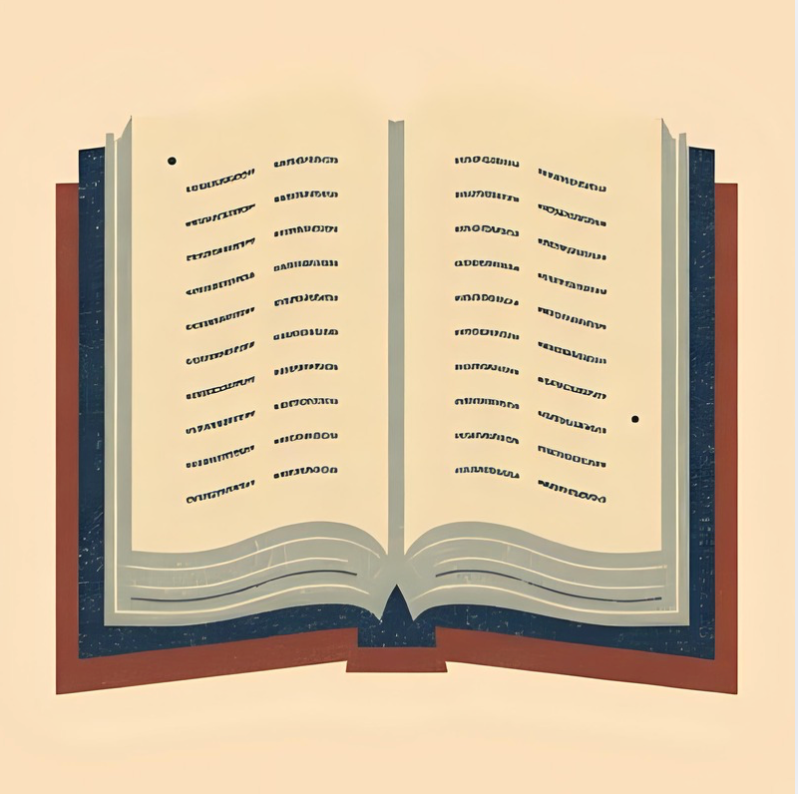Understanding Attunement Manuals: Your Gateway to Energy Work, Not Your Rulebook
- Jay Burrell
- Aug 11, 2025
- 9 min read

When you first receive an attunement manual, whether it's for Reiki, Seichim, Kundalini, or any other energy healing modality, it's natural to treat it like a sacred text that must be followed to the letter. Many practitioners clutch these manuals tightly, afraid to deviate from the prescribed methods, symbols, or techniques outlined within their pages. However, this approach, while understandable, fundamentally misses the true purpose and nature of what these manuals represent. Attunement manuals are not rigid instruction booklets that dictate the only correct way to work with energy. They are not commandments carved in stone, nor are they the final word on how these powerful forces must be channeled. Instead, they serve as gentle guides, offering you a starting point and a framework for understanding the energies you've been attuned to. Think of them as maps rather than GPS systems with turn-by-turn directions that cannot be questioned or altered.
The True Nature of Energy Guidelines
The information contained within attunement manuals represents the collective wisdom and experience of those who have worked with these energies before you. When a Reiki master writes about hand positions, or when a Seichim practitioner describes the flow of Egyptian healing energy, they are sharing their personal journey and understanding of how these forces have manifested in their own practice. These descriptions are valuable and meaningful, but they are not universal laws that apply to every practitioner in exactly the same way. Energy is inherently fluid, dynamic, and responsive to the individual who channels it. Just as water takes the shape of whatever container holds it, healing energy adapts to the unique vessel of each practitioner. Your energy signature, your spiritual background, your emotional makeup, your physical constitution, and even your cultural context all influence how these forces will express themselves through you. The manual provides you with a foundation, but the actual work begins when you start to explore how these energies want to move through your particular being. Consider the origins of these energy systems themselves. Most traditional healing modalities emerged through direct spiritual experience, meditation, and intuitive revelation rather than through rigid academic study. The founders of these systems were often mystics, healers, or spiritual seekers who opened themselves to divine guidance and allowed new understanding to flow through them. They didn't receive a manual from the universe; they received direct energetic transmission and then did their best to translate that experience into words and techniques that others could follow.
The Living History of Energy Systems
Understanding how these energy systems came into being helps illuminate why manuals should be viewed as starting points rather than endpoints. Take Reiki, for example, which emerged through Mikao Usui's profound spiritual experience on Mount Kurama in Japan. Usui didn't receive a step-by-step manual during his enlightenment; he received a direct energetic initiation that transformed his ability to channel healing force. The techniques and symbols that we associate with Reiki today were developed over time as Usui and his students worked to systematize and teach what was essentially a mystical experience. Similarly, other energy healing modalities have emerged through direct spiritual revelation, channeled information, or deep meditative insights. The practitioners who first received these energies had to experiment, explore, and develop their own understanding of how to work with these forces effectively. They created the first manuals based on their personal experiences and discoveries, but these were never intended to be the final word on how these energies must be used. This historical perspective reveals an important truth: the energy systems themselves are far more ancient and vast than any manual could possibly contain. The manuals represent human attempts to capture and communicate something that is essentially beyond words. They are like photographs of a flowing river – useful for showing you what the river looks like, but incapable of conveying the full experience of standing in the current and feeling the water move around you.
The Importance of Personal Exploration

Once you understand that manuals are guidelines rather than absolute rules, you open
yourself to a much richer and more authentic relationship with the energies you've been attuned to. This doesn't mean abandoning the wisdom contained in your manuals or dismissing the experiences of those who came before you. Rather, it means using that wisdom as a launching pad for your own exploration and discovery. When you begin to play with the energies – and yes, play is exactly the right word – you start to develop your own energetic vocabulary. You might discover that certain symbols resonate more powerfully with you than others, or that the energy flows more freely when you modify traditional hand positions to match your intuitive sense of where healing is needed. You might find that the energy wants to express itself through sound, movement, or visualization in ways that aren't described in your manual. This kind of experimentation isn't disrespectful to the tradition; it's actually honoring the true spirit of how these systems developed in the first place. The original practitioners were innovators and explorers who trusted their direct experience over rigid adherence to existing methods. By following their example and allowing yourself to be guided by your own energetic sensitivity, you're participating in the living evolution of these healing arts. Personal exploration also allows you to discover how the energies want to work specifically with you and through you. Every practitioner has unique gifts, challenges, and areas of specialization. Some people are naturally drawn to emotional healing, while others excel at physical ailments or spiritual clearing. Some practitioners work best with gentle, nurturing energy, while others channel more dynamic, transformative forces. Your manual can't tell you which category you fall into – only direct experience and experimentation can reveal your particular energetic signature.
Developing Your Energetic Sensitivity
As you begin to work more intuitively with your attuned energies, you'll start to develop what might be called energetic sensitivity – the ability to perceive, direct, and modulate subtle energy with increasing precision and confidence. This sensitivity is like a muscle that grows stronger with use, and it's something that no manual can fully teach you. The manual can tell you that energy flows through your hands, but only practice can teach you to feel the difference between various types of energy, to sense blockages and imbalances, and to know intuitively where healing is most needed. This developing sensitivity will also teach you about the personality and characteristics of different energy systems. You'll begin to notice that Reiki energy might feel different from Seichim energy, which feels different from Kundalini energy, and so on. Each system has its own signature, its own way of moving, and its own particular gifts and applications. Your manual might describe these differences intellectually, but your hands, your heart, and your intuition will teach you to recognize them experientially. Moreover, as your sensitivity develops, you'll start to understand how these energies want to work with your specific clients or healing situations. The energy that flows during a session for someone with chronic pain might feel completely different from the energy that emerges when working with someone processing grief or trauma. Your growing sensitivity will teach you to recognize these differences and to trust the energy's own intelligence about what is needed in each moment.

The Intelligence of Energy
One of the most profound realizations that comes from working intuitively with attuned energies is the recognition that these forces possess their own intelligence. Energy knows where it needs to go, what it needs to do, and how it needs to express itself for maximum healing benefit. Your role as a practitioner is not to control or direct this intelligence according to rigid protocols, but rather to serve as a clear, open channel that allows the energy to do its work. This understanding fundamentally shifts your relationship with your practice. Instead of trying to remember the correct hand positions or the proper sequence of symbols, you learn to tune into the energy's own guidance and follow its lead. You might start a session with traditional techniques from your manual, but then find yourself guided to work in completely different ways as the energy responds to the specific needs of the moment. This doesn't mean abandoning all structure or technique – the methods in your manual provide valuable tools and frameworks that can enhance your ability to channel energy effectively. However, it does mean holding these techniques lightly, as options rather than requirements, and remaining open to the energy's own preferences about how it wants to express itself through you.
Building Confidence Through Practice
Many practitioners hesitate to deviate from their manuals because they fear doing something wrong or somehow diminishing the effectiveness of their healing work. This concern is understandable but ultimately counterproductive. The energy systems you've been attuned to are robust and intelligent – they won't be damaged or weakened by your experimentation and exploration. In fact, they often become more powerful and effective when you work with them in ways that feel authentic and natural to you. Building confidence in your intuitive abilities requires practice and patience. Start small by making minor modifications to traditional techniques and observing the results. Notice how the energy feels when you work intuitively versus when you follow your manual exactly. Pay attention to feedback from clients about which approaches feel most healing and beneficial to them. Over time, you'll develop a sense of what works best for you and your unique style of practice. Remember that even the most experienced practitioners continue to learn and evolve in their understanding of energy work. There is no final destination where you'll have mastered everything and no longer need to experiment or explore. The journey of working with subtle energy is one of continuous discovery, and your willingness to remain open and curious will serve you well throughout your practice.
Integrating Tradition with Innovation
The goal of working more intuitively with your attuned energies isn't to reject traditional methods entirely, but rather to find the right balance between honoring established wisdom and trusting your own direct experience. The techniques in your manual represent tested approaches that have helped many practitioners over time. They provide a solid foundation and a common language that connects you with a larger community of healers. At the same time, your personal innovations and discoveries contribute to the ongoing evolution of these healing arts. When you find new ways of working with energy that are particularly effective, you're adding to the collective wisdom of your tradition. Your unique perspective and experience have value, and your willingness to explore and experiment helps keep these ancient systems alive and relevant for contemporary practitioners. The most effective approach is often to master the traditional techniques first, so that you have a solid foundation to build upon, and then gradually begin to incorporate your own insights and modifications. This way, you honor both the wisdom of those who came before you and the guidance of your own developing intuition.

The Deeper Purpose of Energy Work
Ultimately, working with attuned energies is about much more than following techniques or
achieving specific healing outcomes. It's about developing a deeper relationship with the subtle forces that underlie all of existence, and learning to serve as a conduit for divine healing energy. This relationship cannot be fully captured in any manual, no matter how detailed or comprehensive. Your manual provides you with an introduction to these energies and some basic tools for working with them, but the real learning happens through direct experience, practice, and inner development. As you continue to work with these forces, you'll discover that they have much to teach you about healing, spirituality, and the nature of reality itself. This teaching happens not through words or concepts, but through direct energetic transmission and experiential knowing. The energies you've been attuned to are ultimately expressions of universal love and healing intelligence. They want to work through you in the most effective and authentic way possible, which may or may not match exactly what's described in your manual. By remaining open to their guidance and trusting your own developing sensitivity, you allow these forces to express themselves through you in their fullest and most powerful form.
Embracing Your Unique Path
Every practitioner's journey with energy work is unique, shaped by their individual background, gifts, challenges, and spiritual path. Your manual provides you with a starting point, but your actual practice will be influenced by countless factors that no manual could possibly anticipate. Your cultural background, your personal healing journey, your spiritual beliefs, your natural talents, and even your life experiences all contribute to how these energies will express themselves through you. Rather than seeing this uniqueness as a problem to be solved or a deviation to be corrected, embrace it as the natural and beautiful expression of your individual relationship with these healing forces. The energy world is vast enough to accommodate infinite variations and expressions, and your particular way of working contributes something valuable and irreplaceable to the larger tapestry of healing work. This doesn't mean that anything goes or that all approaches are equally effective. It does mean that within the broad framework provided by your attunement and training, there is room for personal expression, innovation, and growth. The key is to remain grounded in genuine service to healing while staying open to the unique ways that these energies want to work through your particular being.
Conclusion
Attunement manuals serve an important purpose as guides and teachers, offering you valuable wisdom about the energies you've been connected to and providing practical techniques for channeling these forces effectively. However, they are not the final word on how these energies must be used, nor are they complete descriptions of the vast healing potential that has been awakened within you. The real magic happens when you move beyond rigid adherence to written instructions and begin to develop your own authentic relationship with these energies. Through practice, experimentation, and trust in your developing intuition, you'll discover how these forces want to work specifically with you and through you. You'll learn to recognize their unique signatures, to follow their intelligent guidance, and to serve as an increasingly clear and effective channel for their healing power.
Remember that the practitioners who first developed these systems were explorers and innovators who trusted their direct experience over established convention. By following their example and remaining open to your own energetic discoveries, you honor both the tradition you've inherited and the unique gifts you bring to this ancient art of healing. Your manual provided you with a map, but the territory you'll explore is vast, beautiful, and ultimately yours to discover.




Comments